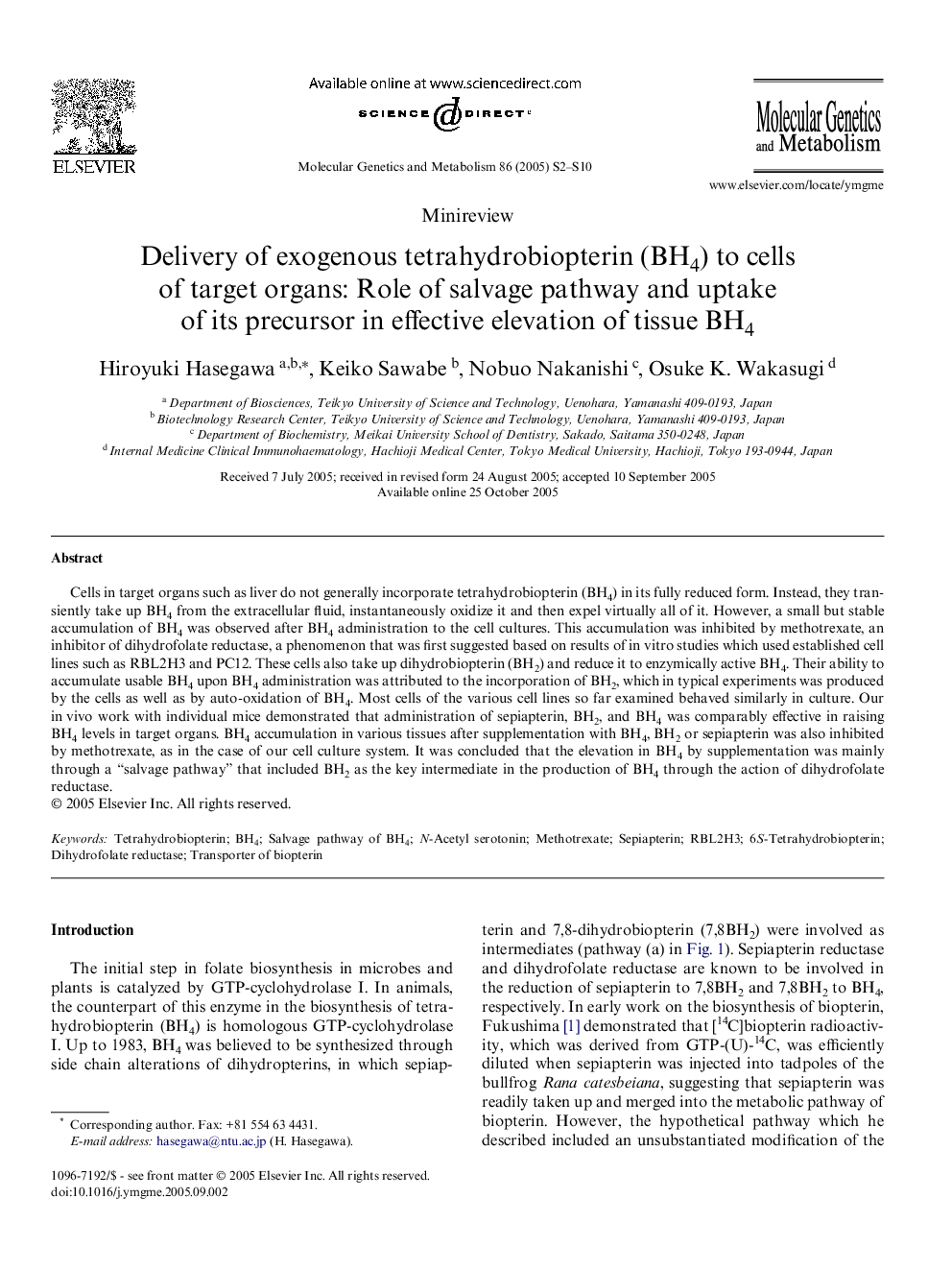| Article ID | Journal | Published Year | Pages | File Type |
|---|---|---|---|---|
| 10834027 | Molecular Genetics and Metabolism | 2005 | 9 Pages |
Abstract
Cells in target organs such as liver do not generally incorporate tetrahydrobiopterin (BH4) in its fully reduced form. Instead, they transiently take up BH4 from the extracellular fluid, instantaneously oxidize it and then expel virtually all of it. However, a small but stable accumulation of BH4 was observed after BH4 administration to the cell cultures. This accumulation was inhibited by methotrexate, an inhibitor of dihydrofolate reductase, a phenomenon that was first suggested based on results of in vitro studies which used established cell lines such as RBL2H3 and PC12. These cells also take up dihydrobiopterin (BH2) and reduce it to enzymically active BH4. Their ability to accumulate usable BH4 upon BH4 administration was attributed to the incorporation of BH2, which in typical experiments was produced by the cells as well as by auto-oxidation of BH4. Most cells of the various cell lines so far examined behaved similarly in culture. Our in vivo work with individual mice demonstrated that administration of sepiapterin, BH2, and BH4 was comparably effective in raising BH4 levels in target organs. BH4 accumulation in various tissues after supplementation with BH4, BH2 or sepiapterin was also inhibited by methotrexate, as in the case of our cell culture system. It was concluded that the elevation in BH4 by supplementation was mainly through a “salvage pathway” that included BH2 as the key intermediate in the production of BH4 through the action of dihydrofolate reductase.
Related Topics
Life Sciences
Biochemistry, Genetics and Molecular Biology
Biochemistry
Authors
Hiroyuki Hasegawa, Keiko Sawabe, Nobuo Nakanishi, Osuke K. Wakasugi,
